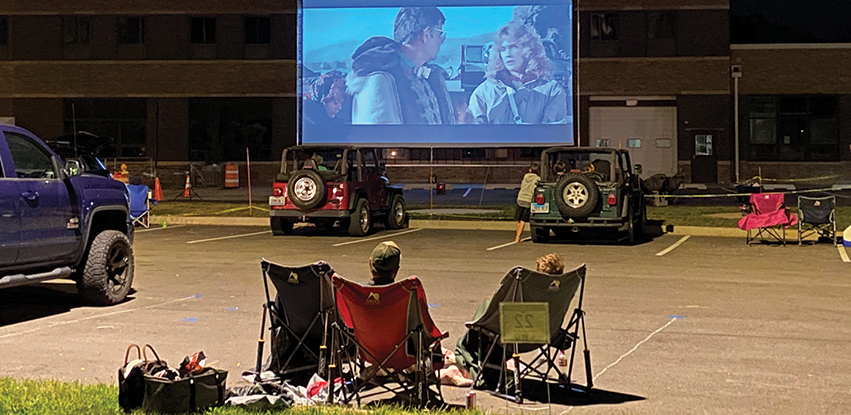
I was going to start this article by saying, “During this unprecedented event…” but that’s really not true. The 1918-1919 influenza pandemic claimed an estimated 20 million to 50 million victims worldwide, while the flu pandemic of 1956-1958 killed somewhere between one million and four million people. Since the start of the HIV/AIDS crisis, some 35 million people have died from AIDS-related illnesses.
The point is that we have experienced pandemics in the past, and the human race has survived. Today, our technology and modes of communication have never been more advanced or able to respond more quickly. And yet, many businesses could go bankrupt as a result of the COVID-19 crisis, including smaller independent businesses as well as larger national chains. Going months without a revenue stream can deliver a fatal blow to even the most viable operations. This brings us to our current state—our “new normal”—and how different businesses are fighting (or not) to stay alive.
Staying Connected
I spoke to a good friend whose wife owns a large salon with a significant customer base. It was considered a “non-essential business” and closed as a result. A true entrepreneur, she was thinking outside the box at how she could maintain her business during the indefinite shutdown.
The first thing I learned was that many people’s greatest concern was not the hair styling itself, but the fading of color treatments. She decided to address this remotely by mixing up color treatments based on each customer’s individual needs and packaging them in a personalized kit, along with timing directions, gloves and a brush for them to apply the treatment themselves. Her husband then called to set up times to deliver these kits to customers, with no personal contact. Not only was the income stream helpful in staying afloat; more importantly, they were staying connected to their loyal customers.
Differentiate Yourself
Years ago, my wife and I purchased a vehicle from a dealership that traded in expensive, high-quality brands. During my first interaction there, I discovered a truly wonderful experience that I had never had before. I brought in my car for a free car wash, and while waiting, I enjoyed complimentary “café service” in a comfortable lounge area with a fireplace and large-screen television. I looked forward to frequenting the dealership regularly and transitioned my regular maintenance work there.
Several weeks ago, when things seemed to have stabilized a bit, I went in for a car wash (I hadn’t been there in three months) only to be told they were no longer doing car washes due to COVID-19, and would not resume the service until it was completely resolved. To be honest, I didn’t quite understand how “social distancing” tied into this particular service. Their response felt like an excuse. In this case, I found that critical differentiator—the superior service and experience that cannot be found elsewhere—to be lacking.
Opportunity Knocks
When the pandemic closed traditional movie theaters, an opportunity presented itself to an all-but-extinct format: the drive-in movie theater. Once a thriving option for family entertainment, it has long been more of a nostalgic memory (with a few notable exceptions). It is also the only structure left for showing first-run movies publicly on a large screen.
My wife and I recently enjoyed a visit to a new coffee shop that just opened at Keller Station in Peoria. It was a beautiful Sunday morning and as we walked around the property, we spied what looked like a large outdoor movie screen. It seems the owners of the facility had just started showing movies “drive-in style” on the weekends, including family-friendly fare like Ferris Bueller’s Day Off and The Goonies. I hear they are trying to get the rights to a broader selection of films—and are even looking at utilizing an ice cream truck to complete the experience. And we can’t wait to go! The moral of this story is that even the worst crisis can create opportunity.
Return to Normal?
Things are evolving rapidly. Most states have begun lifting the quarantine, reopening businesses that had been designated “non-essential.” Inevitably, the infection rate and death toll started to rise in states like Texas and Georgia. We saw a large pool party with no social distancing or masks in evidence. One partygoer was quoted as saying, “We have no masks and no fear”—and, apparently, no common sense.
We have seen major protests on both sides of the issue. For those who are older or have underlying health conditions, they (and their loved ones) believe it is imperative to continue to maintain social distancing. Conversely, some people desperately need to return to work to support their families, and many independent business owners are in jeopardy of losing everything they have built. This existential conundrum is very real.
The old saying, “When the going gets tough, the tough get going,” has never been more applicable in the business world. There will always be excuses for not going the extra mile. But with hard work and creativity, some businesses are finding new opportunities for growth—or at least survival.
Last Sunday, my wife and I attended an outdoor church service. Rather than simply doing a “Zoom service” like many other religious organizations, the pastor delivered his sermon from a platform while we sat in our cars and tuned in our FM radios, periodically honking our horns in response to his motivational words. Volunteers circulated the aisles, handing out inspirational tracts and small gifts to the children. By getting a little creative, the pastor achieved a higher level of connectivity with his congregation.
I do not know what the pandemic will look like by the time you read this, but we should continue to push our creativity to survive. May we all stay safe while we wait to return to our “normal” lives. PM
- Log in to post comments

